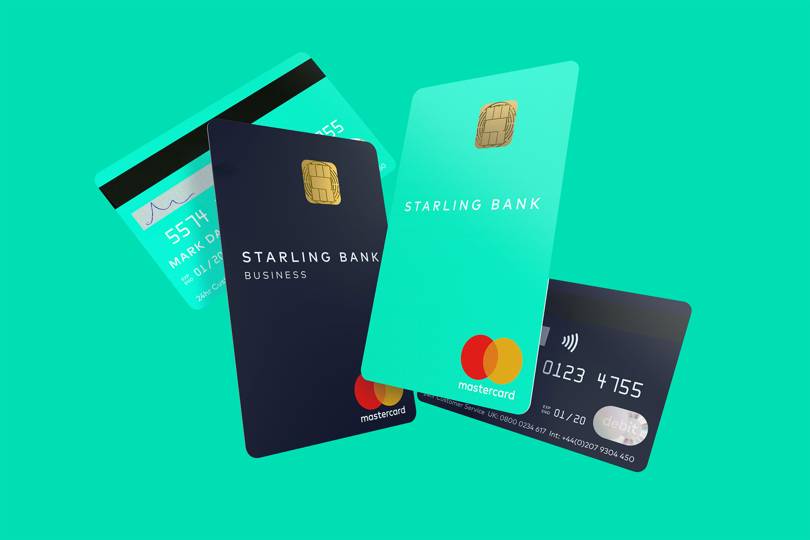
As Monzo flounders, arch rival Starling Bank is set to make a profit
via WIRED
As other digital banks continue to be battered by the coronavirus crisis, Starling Bank has bucked the trend: it’s back on track to turn a profit by the end of this year.
In a trading update issued on Thursday, Starling announced that it generated £6.7 million for the month of July 2020, meaning that it could make an annual revenue of £80m. This would make it the first major UK neobank to turn a profit.
These new results contrast with those of rival Monzo, which last month expressed “significant doubt” over its ability to continue after doubling its losses during the pandemic. Monzo’s annual accounts showed losses widening from £47.2m to £113.8m amid a hiring spree, marketing, and US expansion. Revenues more than tripled in the same period, from £19.7m to £67.2m.
Revolut has yet to post a financial update following the coronavirus pandemic, but so far has cut 60 staff, and offered a “share swap scheme” for employees to trade in part of their monthly pay packers in exchange for part of the company. The company’s co-founders, Storonsky and Vladyslav Yatsenko, gave up their salaries for a year.
Last month, Jefferies analysts were openly sceptical about the future of digital banks, and said they were foundering when it comes to install rates and consumer engagement.
“The crisis has given us the opportunity of really spending some time focusing on getting new products out, getting new things launched and consolidating our position,” says Starling Bank CEO Anne Boden. The entrepreneur said that she also plans to hire up to 1,200 people by this time next year.
Starling’s request for a banking licence in Ireland, put on hold during the coronavirus crisis, is also now back on the table as the challenger bank eyes a European expansion. “I have every confidence that we will maintain our profitability month by month,” Boden says, “Whether we are profitable on a yearly basis largely depends [on] how our international development goes and how many countries we have.”
An Irish launch is likely to happen next year, Boden says. ”We are quite excited because the heavy profitability in the UK does prove the model out. And now we need to figure out which countries in which order and how we’re going to roll this out.”
These figures show that Starling has largely dodged the effects of the crisis so far. Boden says that the bank saw a 15 to 20 per cent dip in activity during lockdown months, but that the “pent-up demand” from consumers swung numbers back up to above pre-crisis levels.
Demand from SMEs during the pandemic also helped to drive up revenue, Boden claims, as around ten per cent of the bank’s business customers are taking out loans. The bank was one of the lenders chosen by the British Business Bank to operate under the government-backed Coronavirus Business Interruption Loan Scheme (CBILS) earlier this year.
Starling now has over 1.5 million accounts in total, with almost 200,000 SME accounts and 1.2 million retail accounts totalling £3.05 billion at the end of July. Starling says it has grown customer accounts by 130 per cent since the start of the year.
In March, Starling was the only major consumer neobank to avoid furloughing or cutting staff as coronavirus and its associated lockdown paralysed spending. At the time, Boden was cautious about the bank’s goalpost for profitability and said that it was unlikely that the bank would break even by January 2021.
The company’s 2019 accounts show the bank’s losses widening from £26.8m to £53.6m, while turnover grew from £14.2m to £23.9m in the same period.
However, Starling believes that it avoided being battered by the pandemic not just because of its banking arm, but also because most of its customers are of an older demographic. With an average age of 37 and growing, Starling customers tend to spend locally and have made the bank less reliant on international spending. Boden says that 87 per cent of retail customers revenue comes from within the UK.
Monzo, which launched its business offering during the pandemic, relies far more heavily on consumer banking than Starling, and was heavily affected by the drop-off of international transactions and the closure of shops and restaurants across the country. In the first weeks of the pandemic, Monzo said that it would furlough up to 295 of its staff under the government’s job retention scheme. Blomfield said he would sacrifice his own salary for an entire year. Since then, Monzo CEO Tom Blomfield stepped down as chief executive of the bank, and was replaced by US CEO and former Visa executive TS Anil.
In its latest annual report, Monzo said its directors were “confident in Monzo’s ability to execute its business plan and raise capital if necessary”. In June, the bank raised £58 million from investors at a 40 per cent discount, slashing the company’s valuation to £1.25bn, down from £2bn.
The Bank of England hiked Monzo’s capital requirements at the time it was trying to raise funds in a sign that it plans to curb the pace of growth of new lenders, according to the Financial Times . This temporarily made Monzo’s capital requirements more than twice as high as other mainstream banks.





